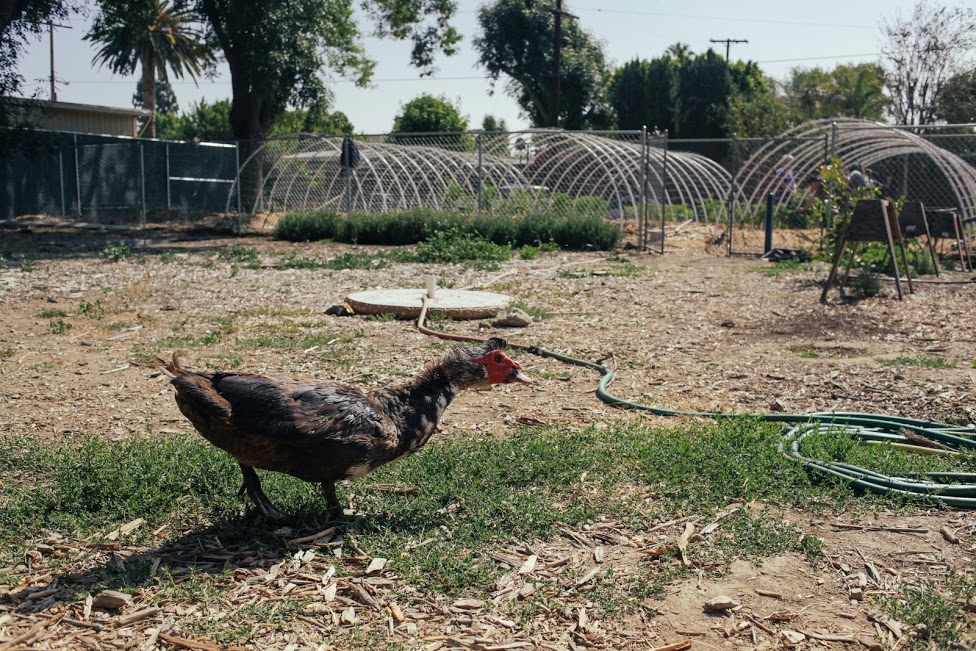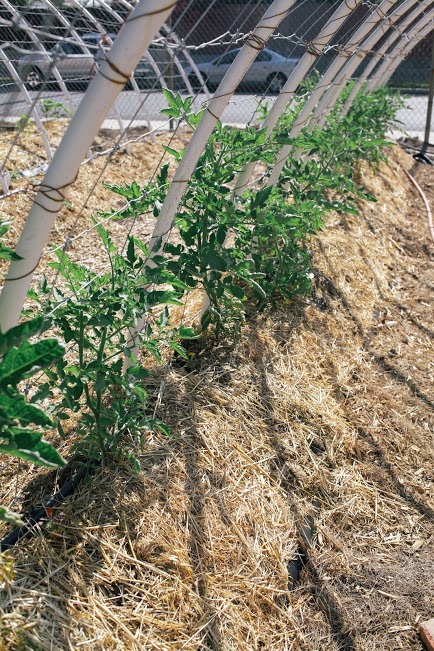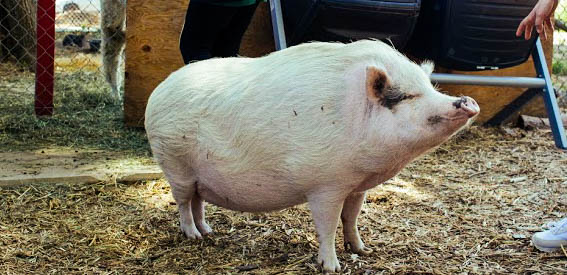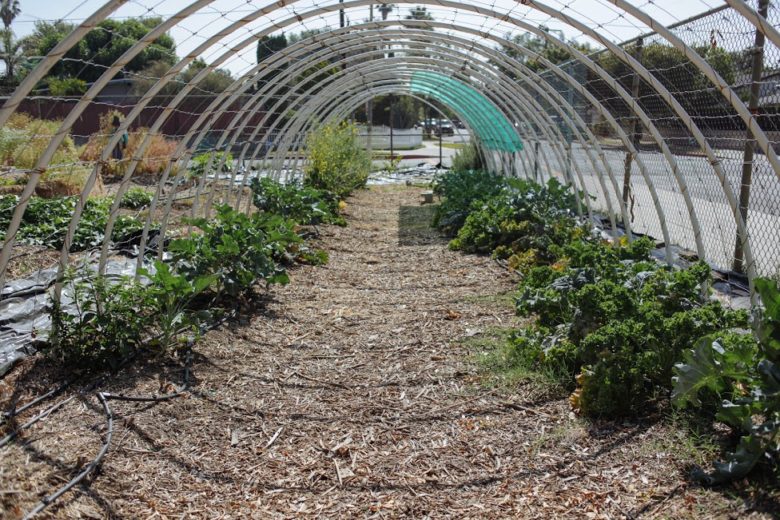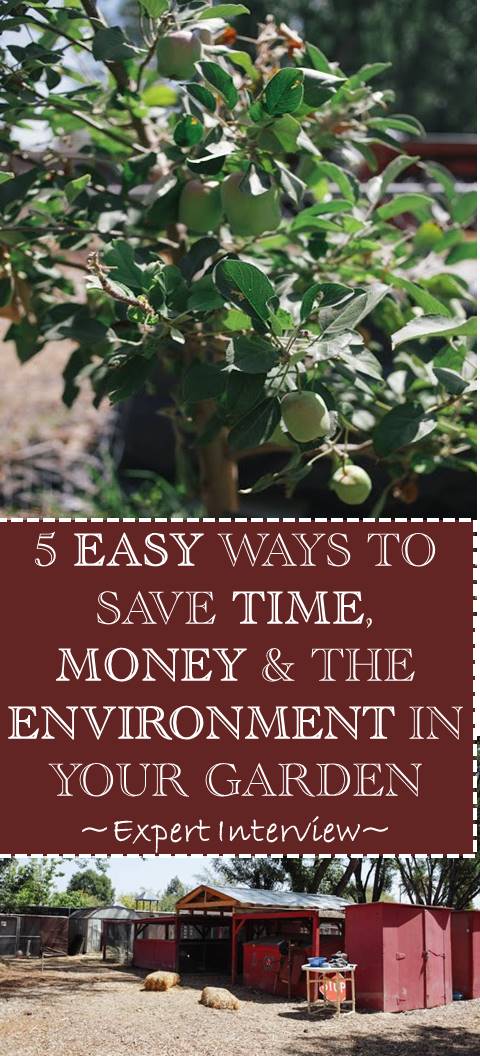This summer I had the honor of interviewing Karen Snook, the Executive Director of non-profit Kindred Spirits Care Farm at John R. Wooden High School. The farm is sanctuary to several rescue animals including alpacas, pigs, goats, hens, ducks, geese, rabbits and more. They also grow a variety of mostly edible plants in the garden, and are only expanding. Furthermore, the location is a school that involves the students in the farming. They learn about business, environmental science, and most importantly the responsibility and love involved in caring for other living beings. Karen has been pouring her heart and soul into the kids and the farm for the past 3 years without pay. She is truly inspirational and what she has accomplished at the farm will touch anyone’s heart.
Get Cultured Ktchn

In this interview you will learn how to:
- Optimize space in your garden for highest yields
- Bring nutrients back into the soil without relying on chemical fertilizers (and a new way to look at weeds)
- Start an edible garden in a strict neighborhood
- Attract diverse life into your garden for healthier plants and soil
- Prepare dry, barren soil for planting with materials you might be able to get for free
*Disclaimer: Some of this content is paraphrased for clarity purposes. Anything in italics is me commentating on or summarizing my conversation with Karen. However, the composition of the interview is comprised mostly of direct quotes from Karen Snook and me. Another thing to note; because I received a tour of Kindred Spirits Care Farm, below reads more like a dialogue than a formal interview.”
Interview:
About the Garden:
Karen: “The idea in the SPIN (small plot intensive) garden is to grow as much as we possibly can in a single bed, in a single area so that we can maximize productivity and therefore maximize profit. The idea is to teach kids business as well as gardening so they are learning to design and to grow while maximizing every inch they can. It’s a school so the primary goal is always teaching so we are showing them some of the interesting techniques you can use, especially these vining plants. Why take up valuable landscape space when you could be growing them overhead? And then use the shade they provide to shade plants that do like some afternoon shade. These are all actually called hugelkulture beds. If you believe it or not, what you are standing on started out as 12 inches of mulch. We fenced off this entire bed and put 12 inches of wood chips to cover the dead crab grass. And not only are we compressing and crushing it by standing on it, but by irrigating it we will also help the fungi so that the mulch will decompose and add to the soil. It also puts an extra layer between us and any toxicity in this soil.”
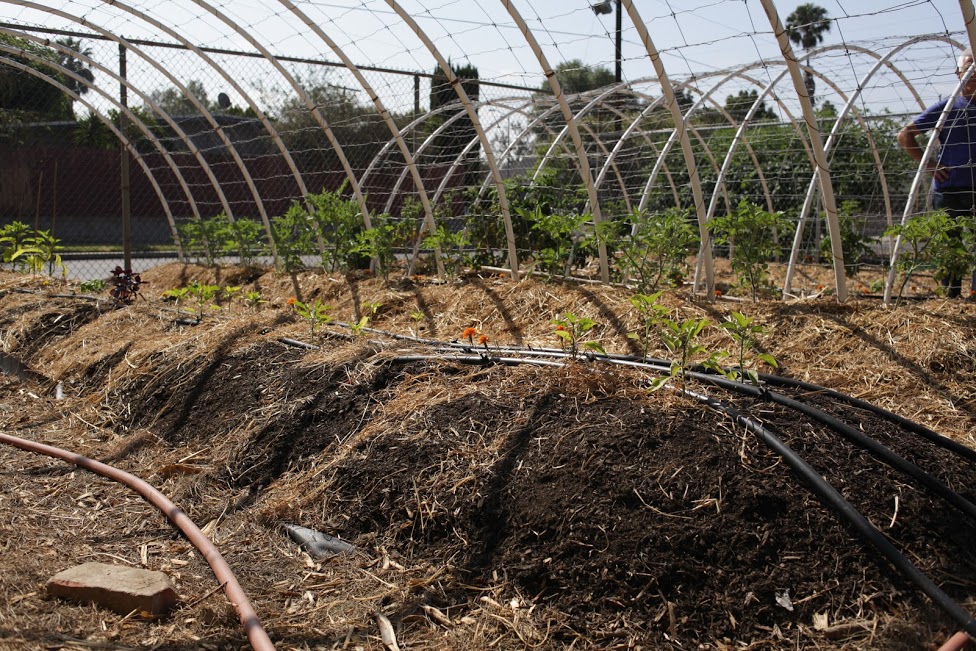
Me: “Where do you get your mulch?”
Karen: “That is a tree company. They love to give us free wood chips by the truck full.
Nourishing the Soil:
We are trying to grow clover over here, because clover is a nitrogen fixer. It takes atmospheric nitrogen and pulls it into the root zone. The other plants can take that nitrogen and use it for growing proteins. So we actually took a pound of clover seeds and spread it all over here. We don’t have irrigation in this part of the yard yet, except for these trees which are very fascinating. They are actually irrigated by the pond. The pond pump used to take all the pond water and dump it into the street, but we redirected it so that when we want to clean out the pond a little bit it, the water is taken to feed the trees. The pond water is very nutritious. Again, it is stacking functions. This process cleans the pond, prevents the pond water from polluting the ocean, and it feeds and waters our new trees.
A New View on Weeds:
Me: Are you planning on clearing out these weeds to plant the trees?
“We have this thing in permaculture that we call “no enemies”. In permaculture they have a termed called “calling in something”. So when you have an imbalance in the environment it calls in its correction. That’s true of bugs and it’s true of weeds in dead dirt. So the dirt will call in what they call “pioneer species” of seeds, because nature hates bare dirt. It will always try to cover dead and bare dirt with something, anything. So a lot of these things we consider to be horrific weeds are actually super tenacious survivors that can come and puncture dead clay with their extraordinary roots. The leaves themselves will eventually die and add carbon material. Once you don’t see it as an enemy and a weed anymore you see it for its beneficial properties. It’s a ground cover. It’s quite green. It doesn’t require any water at all; it’s growing in barren, horrific conditions. It’s piercing the soil and once those roots die worms come through those same channels and it regenerates the soil over time. Nature is a miracle. Something we try to teach the kids is we might see nature as an enemy, because we have this dominating mindset. But if you are not trying to dominate and you are trying to learn from nature and work with it, your mindset changes and you start seeing it for other properties verses just, “Oooh, it doesn’t belong in my lawn, and it has horrible tenacious roots and I should poison it, because it is not the kind of grass I want”.
Natural gardening:
Karen spoke about the ideas of permaculture as they relate to a book titled, One straw revolution, by Masanobu Fukuoka a natural Japanese farmer who developed an almost no interference farming technique. “His whole thing was, “plant the clover!” nature hates bare ground and it is going to cover it with something so why not put something that is a natural ground cover. The guy doesn’t dig, he doesn’t build furrows, he just throws “seed bombs” and whatever lives lives, and that is what was supposed to live there at that point in the evolution of that field. So he would throw clover seed bombs, and flower seed bombs to attract pollinators and just let it go crazy. He stopped pruning his fruit trees. It took him decades to figure it all out, but the result was an almost no work farm that out-produced his neighbors’ farms that were using traditional farming. He didn’t really have to do much except harvest.
We can do that in America too, but we have to start small. Start with a little flower bed, oh and now tomatoes and grapes together. Then suddenly you have a lush garden and are giving away produce, so people are a little more open to the idea.”
A Vision for the Future:
My friend that came with me for the Kindred Spirits Care Farm tour was talking to us about how her mother is attached to this idea of a beautiful green lawn, but here in Los Angeles we live in a desert and are going through a very severe drought. Through talking about “weeds” we learned that some of them are quite beautiful and drought resistant and give a lot to the soil. We have a certain ideology about aesthetics and what is acceptable or not acceptable in a front lawn, but picture this. You walk passed your neighbors front yard and it is teeming with life. Beautiful and mysterious. Luscious strawberries and tomatoes spill out over baskets while green onions stalks line flower beds filled with wild and edible flowers that attract beneficial pollinating and “bad bug eating” insects. You hear the twitter of a diversity of birds attracted by a small pond with a charming stone pathway and a couple of bird houses hanging in a peach tree. When you see your neighbor tending their yard they hand you fresh, delicate sugar snap peas climbing up a beautiful trellis. It evokes conversation and community. Just a small yard can grow enough food to feed more than an entire family. Now imagine if just a few more people transformed their yards into ecosystems producing food. Nourishing families with healthy, organic food and saving everyone money. Maybe one neighbor keeps chickens and one neighbor keeps bees. You trade with both those neighbors, giving them fresh homemade sourdough bread, perhaps you offer to preserve their cucumber crop by making batches of lacto-fermented dill pickles in exchange for picking from their garden. A community of people providing for each other. This is what I, and many of you envision. It starts with you. Pave the way in your community, inspire others and show them the beauty of sustainability.
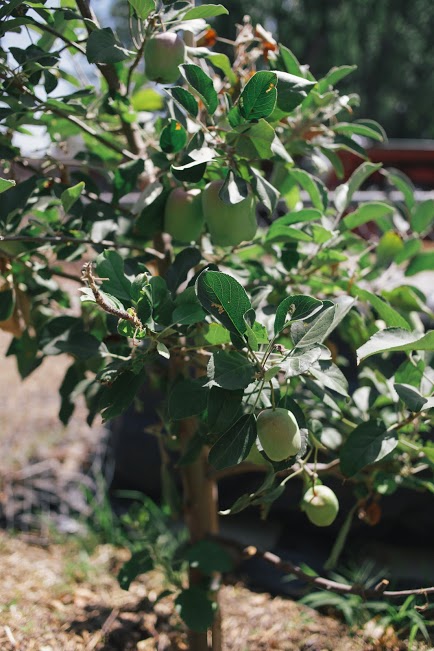
From Death to Life:
How have you transformed this space in the last three years?
When I got here three years ago there were no gardens. Just crab grass. What we’ve done to build up the soil is called sheet mulching. So we laid down cardboard first, and then mulch and then laid down the hay bales. So we are demonstrating multiple types of gardening here. In the center we have the hay bales, which eventually decomposes and leaves nutrients in the bed. We have hugelkultures, which is actually another way of maintaining moisture. You start with logs and big sticks in piles and then cover those with wood chips and then you put your soil and your compost and you plant on top of that. Again, the wood chips and the logs absorb moisture and fill with water over time and act as kind of a sponge. At first they fill with water and then as things dry up a little they release the water and as they decompose they release nutrients into the soil. So it’s another nice way of getting raised beds to store a large amount of water in a dry climate. I don’t want it to take up space for the edibles, but I want the benefit of the pollinator attractor (a plant that draws in bugs and birds that pollinate to the garden). Lavender also doesn’t mind being a little deprived of water sometimes so it does really well outside the area of irrigation.” Karen also told me she was thinking of adding daffodils to the perimeter of the garden. “Daffodils secrete a substance at their roots that prevent moles and gophers. If you can create a wall of daffodil roots they won’t pass it. Mesh works too.”
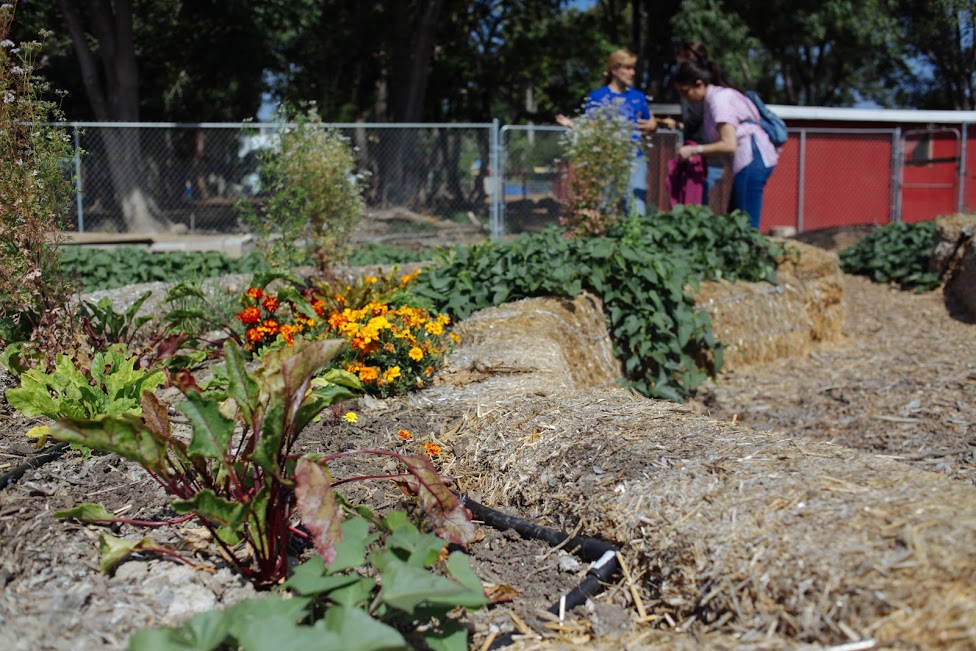
Permaculture Mindset:
Do you rotate your crops?
“Yes we do. Where the tomatoes were last year we are now growing beans and corn. And where the squash and beans were last year we are now growing tomatoes.”
How to decide what to grow in your garden:
What do you think about when deciding what to plant each year?
“Part of what we are trying to do this year is sell. Because I only have so much space there are certain things I can’t grow. I am never going to grow cauliflower. I am never going to grow broccoli or onions, because they are huge plants that produce very little. Also, they usually sell for dirt cheap and travel well. I try to grow things that are unusual and things that will vine up so I can maximize my space. Specialty crops are the only thing that can make money in our situation, because the standard stuff they can do elsewhere.” This is something to consider when planting our own gardens. Most people do not have several acres of land at their expense and so we have to be choosy about what we are going to grow. What does your family eat most? What are things that are relatively low maintenance? How about expensive to buy at stores? Or where a little goes a long way? For me it was herbs and hot peppers. Herbs are perennials, which means they can last for multiple years, most are relatively tenacious and it only takes a small amount of fresh herbs to elevate a dish. I have even grown herbs I dried for my own tea and spice blends! Plus peppers for my own chili powder. I also usually avoid growing things that only give me one crop in return. It takes precious time and water to grow a head of lettuce! And once you cut it back you’ll be lucky for one more harvest. Same goes for root vegetables. I have very limited space so it is not economical for me to grow carrots and onions (although I have). It can take months for them to mature and once you pull them out of the ground that’s it. However, the one advantage of onions is that they continually give you green onions as the plant is maturing. If you have space, plants like tomatoes, beans and cucumbers will continue to produce for a long season. They also give you food to preserve for the winter with just a handful of plants. Making sure to only grow things you will eat minimizes waste and is a better use of your time.
Another thing to consider is growing native plants. Native plants require less water and special compost or soil, because this is their climate. They also attract pollinators and local wildlife. Native shade plants that grow large also save money, because they will spread out and take up considerable space in the garden.
A Helping Hand?:
I couldn’t find a good place for this quote, but I thought it would be nice to close with.
“I want this garden to be available for everybody and anybody who wants this kind of experience.”
It’s easy to notice Karen really involves the community members in her project. Kids from different schools, after school programs and adults alike have gotten tours of the care farm. She is also very open to volunteers and gives away produce to anyone who stops by! She also sells to neighbors and the local farmers’ market. I know I’ve said it a few times now, but I’m not sure how to express how remarkable of a woman she is.
If you live in the San Fernando Valley area (California) and would like to donate your time or money to Kindred Spirits Care Farm you can find Karen’s email at http://www.kindredspiritscarefarm.org/. Meeting Karen I can easily say she is one of the most energetic, positive, open people I know. Furthermore, her disposition is contagious.
Get Cultured Ktchn
Get Cultured Ktchn


